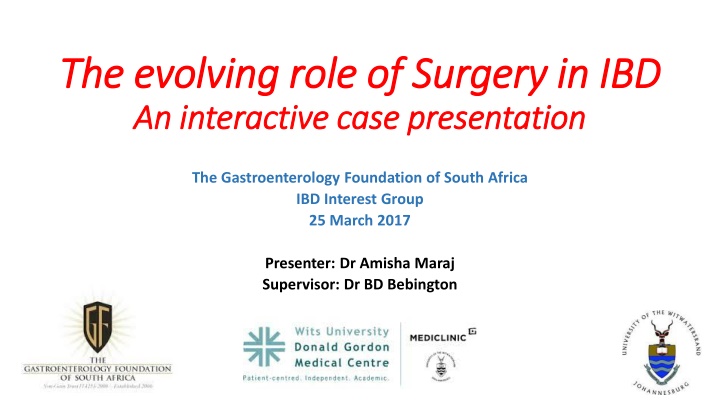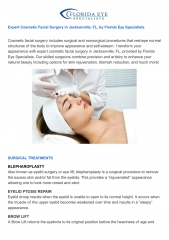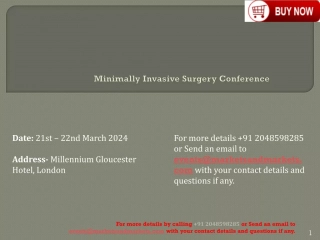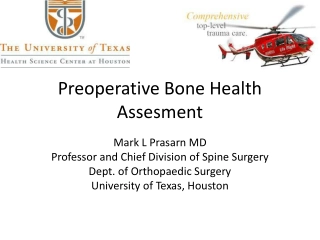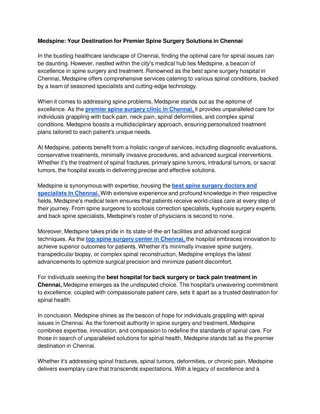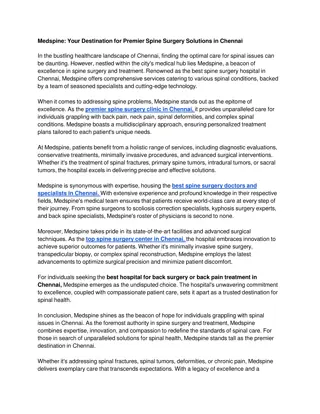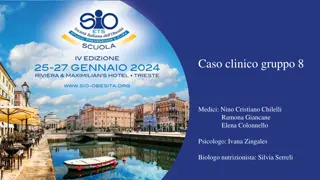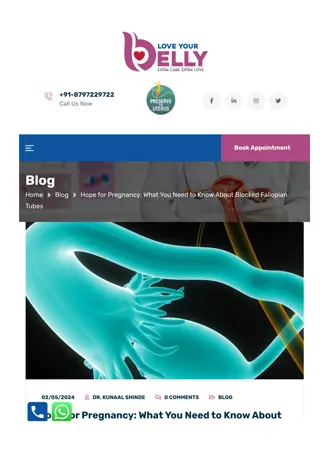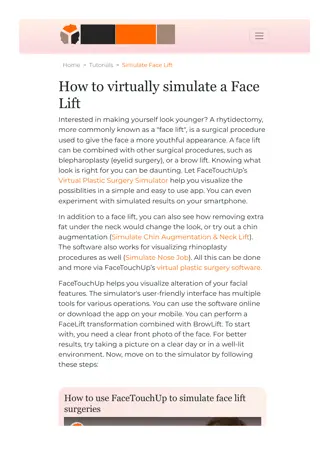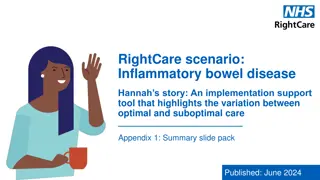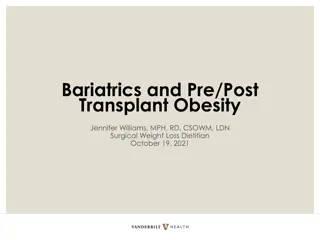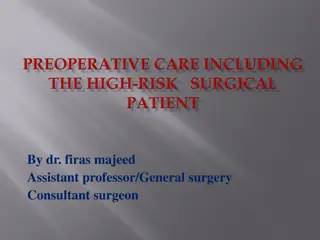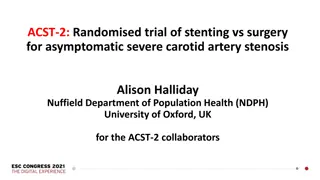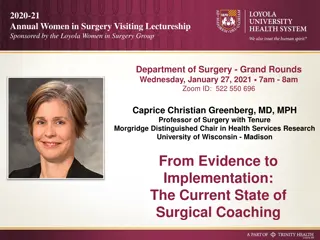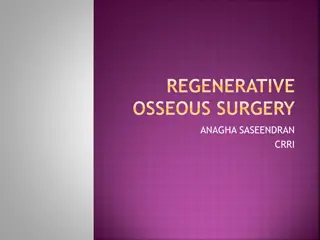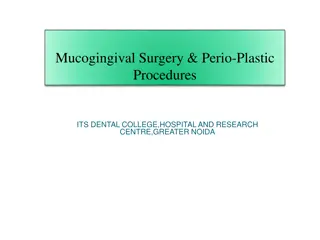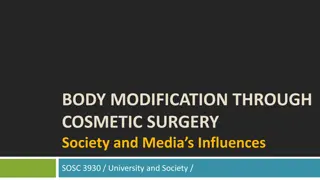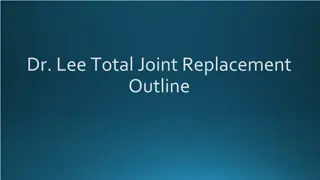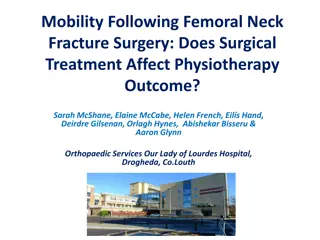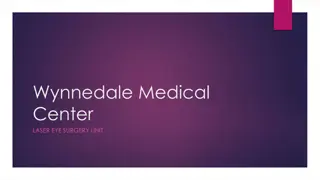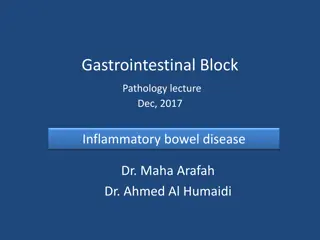The Evolving Role of Surgery in IBD - Interactive Case Presentation
Journey of a 56-year-old female with Crohn's disease, highlighting medical history, impact of management changes, and examination findings. Follow her course of treatment involving surgery, medical therapy, and ongoing care for perianal abscess and complex fistula. Discover the evolving role of surgery in managing IBD complications.
Download Presentation

Please find below an Image/Link to download the presentation.
The content on the website is provided AS IS for your information and personal use only. It may not be sold, licensed, or shared on other websites without obtaining consent from the author.If you encounter any issues during the download, it is possible that the publisher has removed the file from their server.
You are allowed to download the files provided on this website for personal or commercial use, subject to the condition that they are used lawfully. All files are the property of their respective owners.
The content on the website is provided AS IS for your information and personal use only. It may not be sold, licensed, or shared on other websites without obtaining consent from the author.
E N D
Presentation Transcript
The evolving role of Surgery in IBD The evolving role of Surgery in IBD An interactive case presentation An interactive case presentation The Gastroenterology Foundation of South Africa IBD Interest Group 25 March 2017 Presenter: Dr Amisha Maraj Supervisor: Dr BD Bebington https://encrypted-tbn3.gstatic.com/images?q=tbn:ANd9GcTKwqwazP5t1b_JEG6B4EN8Ti10A01GUVeydmCqRZYTSDRDKYa4bWvNfspN
Ms PP 56 year old female First Presentation: 1/10/2001 Referred by GP - 4 day history of perianal abscess + fever Episodes of diarrhoea Describes stool bubbling through vagina No extra-intestinal manifestations of IBD Smoker (since 25 years old; 40 cigarettes a day)
Relevant history: Diagnosed at Kings College Hospital with Crohn s disease in 1968 following a haemorrhoidectomy 1969 - Gastroscopy: Coarse mucosal pattern in the 2ndpart of the duodenum - Barium Meal: There were several abnormal segments of small bowel strictures and in the right side deep ulceration. The terminal ileum was abnormal and narrowed. 1971 - Johannesburg General Hospital - Terminal ileal resection only complaint being diarrhoea. CaCX, radiation Recurrent perianal abscess which was managed by her GP COPD Medication: On HRT Occupation - Project manager at FNB - Stress at work No children Family history - diabetes
Impact of changes in management over time Impact of changes in management over time Surgery Terminal ileal resection Medical therapy Steroids Immunosuppressants Azathioprine + Methotrexate Biologics Infliximab Antibiotics
Examination Pyrexial BP 120/80 HR 75 Abdomen previous scars PV nil apparent Perineum: abscess on the left which was closely related to the anus and evidence of a chronic fistulous tract Assessment perianal abscess & complex fistula in the background of Crohn s
2/10/2001 Drainage of perianal abscess + placement of Seton Sigmoidoscopy + Biopsy 3/10/2001 Referred to gastroenterologist therapy for Crohn s Asacol 400mg tds, Methotrexate ; Flagyl 400mg tds SSRI/HRT 5/10/2001 Healing but still a lot of pain Continue Crohn s treatment Additional analgesia
Evolution of drugs Evolution of drugs Medical therapy Mesalazine widely used in the past now generally considered little benefit Now: Steroids Azathioprine Methotrexate Biologics Infliximab Antibiotics
24/10/2001 Colonoscopy active disease Reached caecum Ileocolonic stenosis at anastomosis Rectum multiple areas of inflammation Rectal and anal stenosis Inflamed polyp anteriorly 8/5/2002 EUA / Relook perineum Washout + Closure of rectal defect with monocryl 2.0 Laparotomy + ileostomy 27/8/2002 Closure of ileostomy 13/9/2002 Laparotomy small bowel stenotic stricture resection + anastomosis
5/8/2013 EUA Rectovaginal fistula - tract from posterior vaginal wall to rectum at 12 0 clock Placement of Seton Biopsy of fistulous tract -moderately differentiated adenocarcinoma 2cm granulomatous lesion on left labia Biopsy Small cystic deposit of mucinous secreting adenocarcinoma Neoadjuvant chemo + DXT 21/8/2013 Gastroscopy mild gastritis; Hpylori negative Sigmoidoscopy mucosal lesion at anorectal junction - Biopsy no features of malignancy
21/8/2013 MRI Ulcer with Fistula tract at anterior anorectal junction No definitive malignant masses but malignant ulcer is possible CT chest/abdomen/pelvis Diffuse emphysematous changes No evidence of mets 13/1/2014 Abdominoperineal resection + posterior vaginectomy (pT1N0M0) Permanent end colostomy IGAP flap
Q1. Risk of anal adenocarcinoma in perianal Q1. Risk of anal adenocarcinoma in perianal fistulas secondary to Crohn s fistulas secondary to Crohn s disease? disease? What is the incidence ? A. 20/1000 patient years B. 200/1000 patient years C. 0.2/1000 patient years D. 2/1000 patient years Answer C ECCO guidelines 2016 In patients with CD, adenocarcinoma complicating perianal or enterocutaneous fistula tracts can occur but is rare. 1. Meta-analysis of 20 clinical trial 1965-2008 incidence of cancer relating to CD associated fistula was 0.2/1000 patient years. 2. 17 year follow up study of 6058 CD patients -> only 4 developed fistula associated adenocarcinomas
Fistula Fistula- -related adenocarcinomas related adenocarcinomas can arise in patients with long-standing perianal CD may be associated with adenomatous transformation factors associated with malignant transformation Early onset disease Disease duration > 10 years Chronic colitis/high inflammatory activity Persistent chronic fistulas and stenosis More common in females, tend to be younger ECCO guidelines 2016
Q2. What is the proportion of squamous carcinoma Q2. What is the proportion of squamous carcinoma to adenocarcinoma in malignant to adenocarcinoma in malignant crohn's fistula? fistula? crohn's perianal perianal A. SCC B. Adenomatous Answer B A. B. SCC 31% Adenomatous 59% Rectum 59% ECCO guidelines 2016
Q3. Frequency and modality of surveillance? Q3. Frequency and modality of surveillance? Regular surveillance recommended for CD patients with chronic persisting perianal fistula to detect ano-rectal carcinomas Routine biopsy of any suspicious lesion Biopsy under anaesthesia Curettage of fistula tract when needed Red flags Long duration Change in symptoms new onset pain*** ECCO guidelines 2016
Treatment of Simple perianal fistulae Treatment of Simple perianal fistulae Uncomplicated low anal fistula simple fistulotomy perianal abscess incision + drainage Symptomatic simple perianal fistulae seton placement +antibiotics (metronidazole and/or ciprofloxacin) Recurrent/ refractory (not responding to antibiotics) thiopurines or anti-TNFs can be used as second line therapy ECCO guidelines 2016
Treatment of Complex perianal fistulae Treatment of Complex perianal fistulae Surgical treatment of sepsis incision + drainage of abscess seton placement Timing of removal depends on subsequent therapy Medical treatment first line therapy - infliximab (adequate source control sepsis surgically) ciprofloxacin +anti-TNF improves short term outcomes anti-TNF treatment + thiopurines to enhance the effect of anti-TNF ECCO guidelines 2016
Continuing therapy for perianal Crohns Continuing therapy for perianal Crohn s disease disease Combination of drainage and medical therapy = maintenance therapy Thiopurines Infliximab seton drainage Medical treatment failure considered for a diverting ostomy proctectomy ECCO guidelines 2016
Anti TNF therapy Anti TNF therapy Carcinogenic risk Carcinogenic risk Lymphoma Leukaemia Carcinoid tumor Ca Colon Breast Lung Melanoma Non Melanotic skin cancers (BCC SCC) TNF inhibitors: are they carcinogenic? Raval et al. Drug Healthc Patient Saf. 2010; 2: 241-247.
References 1. 3rd European Evidence-based Consensus on the Diagnosis and Management of Crohn s Disease 2016: Part 2: Surgical Management and Special Situations Paolo Gionchetti Axel Dignass Silvio Danese Fernando Jos Magro Dias Gerhard Rogler P ter Laszlo Lakatos Michel Adamina Sandro Ardizzone Christianne J. Buskens Shaji Sebastian ... Show more J Crohns Colitis (2017) 11 (2): 135-149. DOI: https://doi.org/10.1093/ecco-jcc/jjw169 Published: 22 September 2016 2. European Evidence-based Consensus: Inflammatory Bowel Disease and Malignancies Vito Annese Laurent Beaugerie Laurence Egan Livia Biancone Claus Bolling Christian Brandts Daan Dierickx Reinhard Dummer Gionata Fiorino Jean Marc Gornet ... Show more J Crohns Colitis (2015) 9 (11): 945-965. DOI: https://doi.org/10.1093/ecco-jcc/jjv141 Published: 20 August 2015 3. TNF inhibitors: are they carcinogenic? Raval et al. Drug Healthc Patient Saf. 2010; 2: 241-247.
